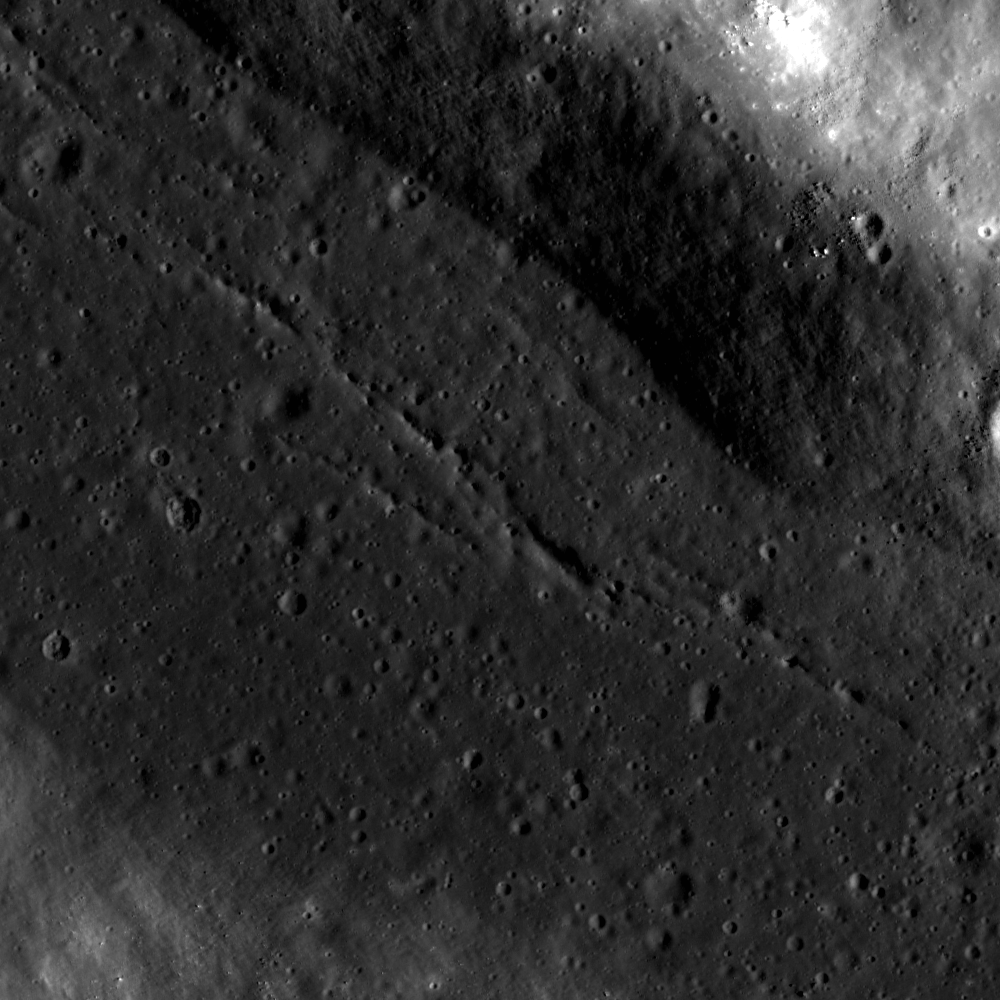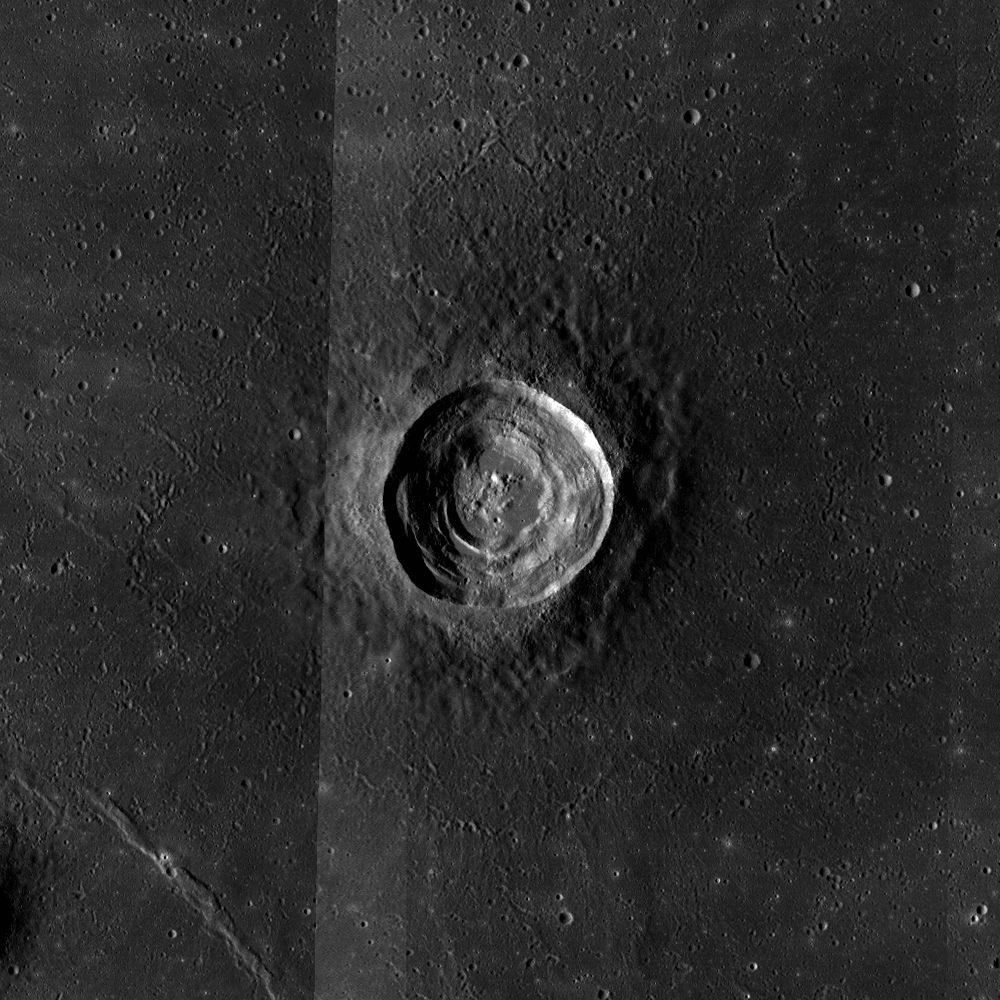
Craters inform lunar scientists about many aspects of the Moon's surface and subsurface. Impact craters act as drill holes into the lunar subsurface, excavating deep material and scattering this previously buried material into their ejecta blankets. Impact melt within craters preserves a mix of the material that was excavated as well. Picard crater, at 14.55° N, 54.74° E, exposes a chemically distinct underlying basalt layer in Mare Crisium. In this way, Picard crater contributed to our understanding of the volcanic stratigraphy within the depths of the Mare Crisium basaltic fill. Does Picard crater penetrate through the basalts to expose the underlying highlands material, and can the impact melt help us understand more about the stratigraphy of the Mare Crisium?
The floor of Picard crater is relatively bright compared to the surrounding basalts (Head et al., 1978) making it likely the deepest material brought up was from benath the mare fill. Thus we can estimate the thickness of the basalt deposit at this location. Spectroscopic studies in the 90's found evidence of both a basaltic and highland rock signature within Picard crater (Blewett et al., 1995). The impact melt that fills a significant portion of Picard crater (like the terrace above) is likely a mix of both rock types, giving Picard crater this mixed signature. Using the LROC WAC Digital Elevation Model (DEM) for the area tells us that Picard crater's floor is about 2300 m below the surface, as is the thickness of the Mare Crisium basalt!
Explore more of Picard crater in the full LROC NAC!
Related Posts:
Copernicus Central Peak
Mare Crisium: Failure then Success
Ghost Crater in Mare Imbrium
Published by Drew Enns on 11 December 2012
